|

At 6:40 p.m. on August 15, 2007,
an earthquake measuring 7.9º (modified Mercali)
struck, with epicenter located on the coasts of Ica.
It affected mainly the regions of Chincha, Cañete,
Pisco, Ica, and several communities in the
department of Huancavelica.
Besides the heavy human toll, the
quake damaged several houses as well as public
utilities such as transportation, energy, water, and
telecommunications.
The damage affected the
communication infrastructure and normal delivery of
fixed telephone services and mobile telephone
services in various parts of the country.
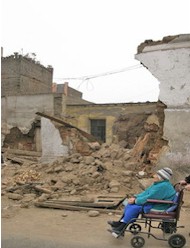

TELEPHONE LINES AND CABLES DESTROYED
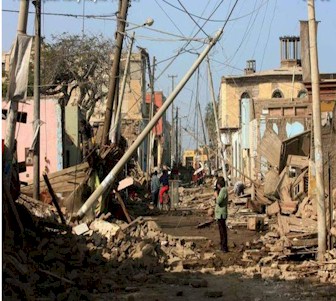
In the affected zone of Ica,
damage to the fixed telephone external plant was
reported, as a result of downed poles, disruption of
fiber optic links, and fallen buildings and, among
other problems, antennas for mobile public service
fell and in some cases broke, and base station
microwave links fell out of alignment.
In Lima, many users were cut off
from communications.
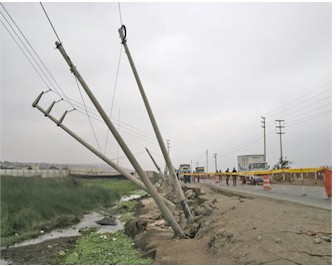
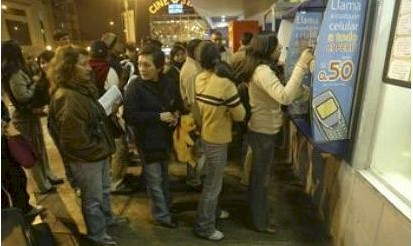
On August 16, 2007, the Ministry held an
emergency meeting with telecommunication companies,
to take immediate steps to reestablish service and
get updates on the situation of damaged and affected
infrastructure. At that meeting, a decision was
taken to:
- Set up an emergency network for Authorities.
- Reestablish service to the affected areas by
setting up mobile antennas or VSATs, as well as
banks of generators and/or new batteries.
- Provide free telephone service in the affected
areas.
- Put up infrastructure in areas where service
was affected and in areas that never had telephone
service.
Immediate action
– Free telephones in the areas of Chincha, Ica,
and Pisco.
– Operators activated free lines in their care
centers.
– 100 mobile lines made available to residents
of Ica, Pisco, and Chincha. That service was
provided by MTC personnel through mobile terminals
provided by companies.
– Free calls from the rural operators’ network.
– Installation of VSAT antennas.
– Army’s Pisco base furnished with
telecommunications equipment.
– Increased satellite capacity for the National
Aerospace Research and Development Commission (CONIDA).
- Satellite telecommunication equipment provided
by ITU
Under the Tampere Agreement on
the provision of telecommunication resources for
disaster mitigation and disaster relief
operations, the International Telecommunication
Union (ITU) presented the Ministry of Transport
and Communications with 50 telecommunication sets:
– 12 Nera GAN Terminal sets, for voice
communication, comprising: DECT Handset, antenna,
cable, battery, feed.
– 38 RBGAN Terminal kits, for data transmission
(Internet access)
In addition, to facilitate their use, guidelines
were prepared for users.
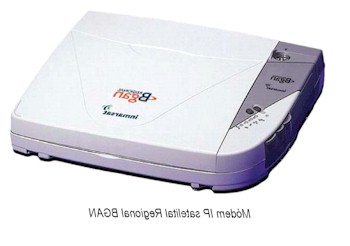
- Support from ham radio operators
As soon as the earthquake struck,
a group of ham radio operators went with mobile
units to Pisco, Ica, and Chincha, facilitating
communications with the National Civil Defense
System.
The report on the performance of
the Peruvian ham radio operators, “Emergency
Operation in Peru,” was published in INFO@CITEL, No.
39, September 2007.
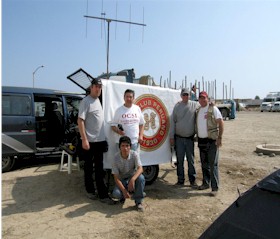
Subsequent action
The Emergency Communication
System was created. (DD.SS. NºS 030-2007-MTC,
30/09/2007 and Nº 043-2007-MTC, 30/12/2007).
The performance framework to be
followed by businesses before, during and after an
emergency takes place, was established. It
comprises:
a) The Special Emergency
Communication Network (RECSE)
b) Prevention Guidelines.
c) Guidelines for Action in
Emergencies.
d) Guidelines for Action in
Affected Areas.
In addition, a framework to
promote amateur radio services was established.
The Communication System for
High-Level State Authorities was implemented
Autonomous, less vulnerable
network, independent of public networks.
MTC Project, implemented and
operating for communication by High-Level
Authorities.
I. Emergency Communications System
a) Special Emergency Communications Network
Provision was put in place requiring mobile and
fixed telephone service operators to permanently
reserve free network space for communications
between and among high-level authorities, and this
will be automatically activated when there is an
emergency situation.
This Network is supported on public networks and
is independent of the National Institute of Civil
Defense (INDECI) and the Ministry of Defense
emergency and security networks.

b) Prevention Guidelines
Operators of fixed telephone
service and mobile public service will implement and
enable the 119 emergency number for Messaging (voice
and/or data) as an alternative to telephone
communication.
The agencies that provide care
through the 105 (Police), 116 (Fire), 115 (Civil
Defense), and 118 (Coast Guard) toll-free emergency
numbers will size their access trunks appropriately.
Operators of fixed telephone
lines and mobile public service must promote the use
of the 119 emergency number for Messaging (voice
and/or data), Internet, radio, television, and other
media, and must also promote the widespread use of
short message service (SMS) as an alternative to
telephone communication in emergencies.
Amateur Radio Operators must
perform emergency drills coordinated by INDECI.
c) Guidelines for Action in
Emergencies
Time limit for calls, which will
not be less than one minute or more than 2 minutes,
and will be in effect for up to twelve (12) hours.
Free calls to emergency numbers:
Calls to 105 (Police), 116 (Fire), and 119
(Emergency-Voice Messaging) free for users and
without interconnection charges.
Support for carrier services in
communications.
d) Guidelines for Action in
Affected Areas
Operators will provide free
service using wireless networks or portable stations
via terminals or other communication-enabling means.
Operators will offer free calls
in the affected areas for the duration of the
emergency, which will be determined by the INDECI.
The Ministry will facilitate the
issuance of licenses for spectrum use and
modification of technical features, for which
operators can then stabilize that situation.
e) Framework to promote
amateur radio service
Exemption from the requirement to
have their equipment certified.
Reduction of the amount charged
for permits, renewal, and change of status for ham
radio operators, from 1% to 0.1% of the per unit
tax.
Reduction of the annual fee paid
by amateur radio operators to use the radio
spectrum. This is, the amount of fees paid for the
three types of ham radio operators was standardized
at 0.1% of the per unit tax.
II. Communication System for
High-Level State Authorities
Features of the System
-
Mobile satellite service
-
Coverage throughout Peru
-
Active line, with capability to
place and receive calls any time
-
Enables calls to be made and
received between terminal devices belonging to the
satellite platform used, and to make and receive
calls to or from fixed and mobile telephones.
-
One hundred (100) devices for
use by high-level authorities.
-
Has access to data services
(Internet access, e-mail, etc.), using a portable
computer.
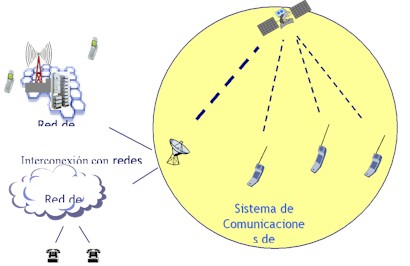
Telecommunication is a vital
means of helping with emergency response.
The earthquake of August 15, 2007
underscored the importance of being alert, careful,
and ready to respond more efficiently to emergencies
or disasters.
It is vital for the use of
alternatives to telephone communication during
emergencies, including SMS, 119 emergency messaging,
and emails, to be promoted among the population.
This will allow more users to be able to communicate
with one another.
Collaboration between government
and business operators is indispensable to efforts
to deliver emergency relief.
Ministry of Communications
Peru |










